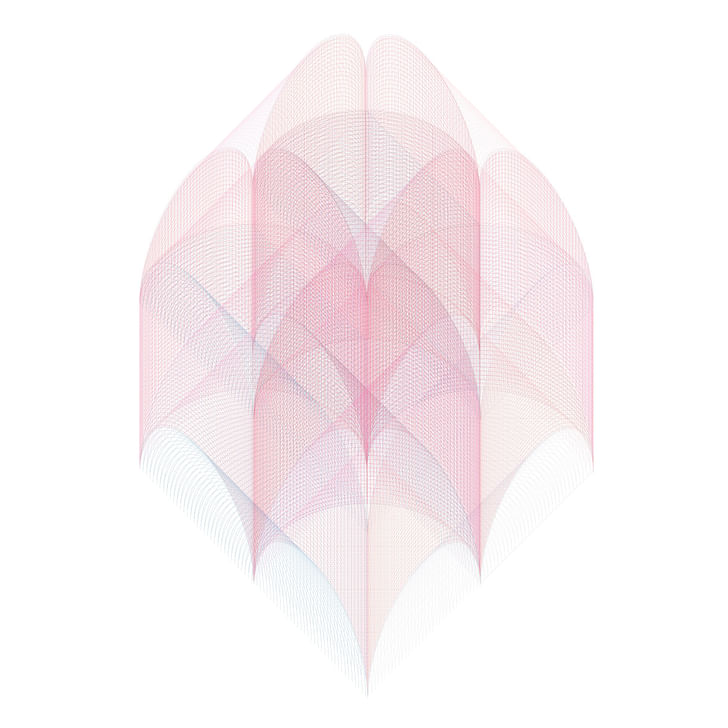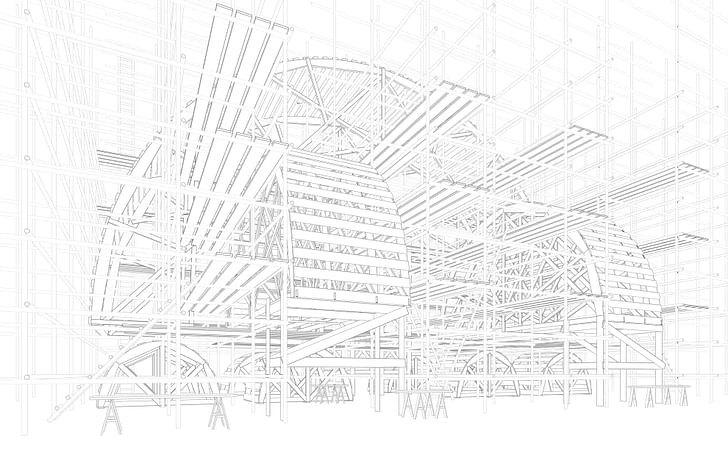

Jessica Ying is a recent M.Arch graduate from the University of Toronto John H. Daniels Faculty of Architecture, Landscape, and Design. Archinect connected with Ying to learn more about her final project and its focus on architectural drawings' power. According to Ying, "digital design culture places great importance in the design process for emerging architects; our method of generating new possibilities in architecture depends on how we are using our digital design tools. Yet, drawing remains the primary instrument to realize our imagination into reality, a form to express our visual thought in the process."
Ying talks of her process behind her thesis project, Reading Between the Lines, and her inspiration to explore line drawing geometries due to Giovanni Battista Piranesi and his Carceri drawing series. Ying also shares her thoughts on what she hopes the future will bring as a recent graduate during the pandemic.
Archinect's Spotlight on 2020 Thesis Projects: 2020 has been an extraordinarily challenging year for architecture graduates. Students were displaced as schools shut down, academic communities had to adapt to a new virtual format, end-of-year celebrations were canceled or changed dramatically, and now these students are graduating into an extremely challenging employment market. To support the 2020 class we're launching a summer series of features highlighting the work of thesis students during this unique time of remote learning amid COVID-19. Be sure to follow our 2020 thesis tag to stay up to date as we release new project highlights.

I believe that the role of drawing is not just documenting the end result of a design process but the process itself becomes the object.
Please briefly describe your thesis/final project and your inspiration.
Before I had an idea of what the project is going to be, I struggled with a series of questions - what have I learned and what did I most enjoy doing over the 3.5 years of M.Arch? How can this thesis project connect all the dots of my passion in architecture, and great interest in architectural drawing?
I analyzed my thoughts and work by gathering a document full of books, lectures, quotes, and theories that have influenced and inspired me over the years. I decided to challenge the limit of our digital drawing techniques that we currently use every day in the design process so that we can produce architecture with many more possibilities. I believe that the role of drawing is not just documenting the end result of a design process but the process itself becomes the object.
I am inspired to show the generative power of this language of digital drawing as an on-going process to extract new and multiple readings of space and architecture, creating a catalog of formal, spatial and tectonic possibilities.
Try to do the things that you are most resistant to and be open to criticism that you are receiving.
How did your project change as studios transitioned to remote learning?
The biggest concern was not being able to use the large machines at school even though my thesis finished right before COVID-19 happened. I had a second hand 3D printer of my own, borrowed a paper cutting machine from a friend, a printer, and my own laptop, which basically downsized all the tools I needed for the drawings and models I was producing for the project. It is interesting now that I realized it became a micro studio that each of us is creating. I am still looking forward to working in the studio with all my classmates so that we can borrow small machines from each other, and are able to try out new methods of creating things.
Any tips for students working through their final projects?
Try to do the things that you are most resistant to and be open to criticism that you are receiving. The biggest breakthrough I had was using the 3D printer. I had been very reluctant to try it because I insisted on using my own method with an image already drawn in my head. With some unexpected and happy mistakes happening while I was working with the machine, the process inspired me to analyze the work that I was doing from a new perspective and were able to find a turning point when I was stuck.
I would like to see if our industry can move towards a more distributed network rather than a centralized one [...] Not only does this help build a more resilient and diverse system when we face a crisis like the current pandemic, but also helps young architects and recent graduates start their own small businesses to get into the market and access new opportunities.
As recently graduated students, how do you feel about the architecture industry right now and job prospects?
A part of me feels stuck as all firms are facing similar problems and we are not able to enter into neither small studios nor big corporate firms, but it also got me thinking how our industry should encourage more micro-businesses. I would like to see if our industry can move towards a more distributed network rather than a centralized one as it is right now. Not only does this help build a more resilient and diverse system when we face a crisis like the current pandemic, but also helps young architects and recent graduates start their own small businesses to get into the market and access new opportunities.
Katherine is an LA-based writer and editor. She was Archinect's former Editorial Manager and Advertising Manager from 2018 – January 2024. During her time at Archinect, she's conducted and written 100+ interviews and specialty features with architects, designers, academics, and industry ...
4 Comments
I'm a sucker for wireframe drawings, gorgeous!
Beautiful drawings. I can't help but say, I had a professor once, that said, "If your drawing isn't good, draw more lines, and if your model isn't good paint it red."
At what point do graphics obscure design quality? Not that graphics are not important in the selling of an idea...
Definitely a problem sometimes and possibly the essential problem of academic theory for architecture: drawings aren't buildings. Zaha obviously succeeded developing an excellent architecture out of elegant paintings - but there was a period of crossover where her built works fell short of the paintings; and then as she got famous the paintings seem to be less prominent in developing the design. Gehry has spoken occasionally of the risk of falling in love with elegant drawings. His own solution was to do very crude sketches and quickly switch to exploring architecture through rough built models. If an idea is compelling when it's crudely built from paperboard and foam it will be achievable in practice.
Michael Graves comes to mind as an architect whose tasteful humanistic drawings always looked better than the heavy repetitive built works.
Block this user
Are you sure you want to block this user and hide all related comments throughout the site?
Archinect
This is your first comment on Archinect. Your comment will be visible once approved.